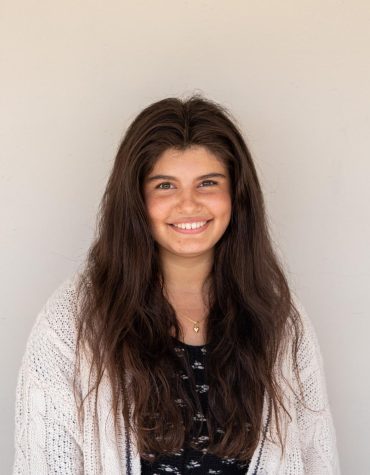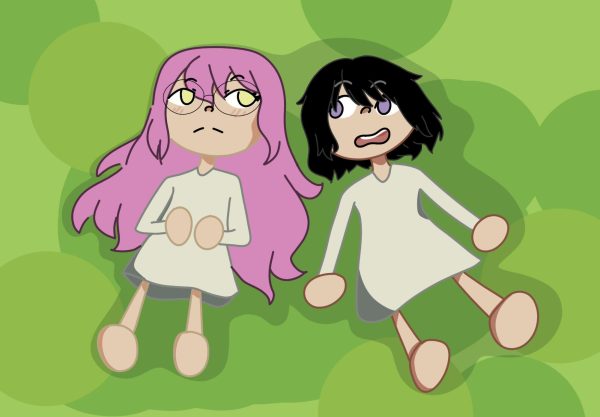My Experience as a Latina in Lamorinda
I have lived in the Lamorinda community most of my life. For a long while, I never felt like I fit in. Growing up as a shy Jewish Latina kid living in a 2-bedroom apartment located in what my peers in middle school deemed the “apartment neighborhood,” I always felt like I had my share of awkward encounters.
Teachers would mistake my Latina Mom for my nanny, some of the students in my class would mockingly compare my apartment to their beautiful house, parents and my peers alike would deem that I would have such an easy time getting into college because of Affirmative Action, and in general members of my community would make ignorant gibes insulting my family’s culture. I recall desperately wanting to fit in.
As I look back at those experiences, with the knowledge I have now, a lot of the comments I received were microaggressions.
Defined by Merriam-Webster, a microaggression is “a comment or action that subtly and often unconsciously or unintentionally expresses a prejudiced attitude toward a member of a marginalized group.”
Microaggressions are often overlooked and not treated that seriously since they are deemed as being only “minor” comments; however, a 2014 study published in the National Library of Medicine found that experiencing microaggressions can lead to depressive thoughts.
Due to the insular nature of the Lamorinda community, with my peers as well as teachers alike commenting on the more homogenous nature of Moraga as the “Moraga bubble,” this community can become a breeding ground for ignorant microaggressions.
“If you grow up in a predominantly white community, you might possibly be naturally unconscious of certain cultural and racial undertones… It is hard for a person who has been in this kind of environment to be conscious of that,” said senior Elizabeth Chien.
An important aspect of microaggressions is that they often aren’t purposeful. Due to systemic racism, prejudiced stereotypes can become ingrained into society at large. When a person makes a sneer comment, they might not be aware of the impact of what they are saying.
“A lot of the times are unintentional in the sense where they are unaware or ignorant of how they could hurt another person,” said Chien.
We are all humans who make mistakes and everyone, regardless of your ethnicity and background, have the potential to commit microaggressions. It’s important to remember, however, that microaggressions do hurt the people they are targeted at, whether intentionally or not.
“It’s not necessarily that you’re a bad person if you commit a microaggression, but rather that you need to be more aware of your biases and impact on people. We all need to commit to working on these things in order to create a more harmonious society,” stated Kevin Nadal, a professor of psychology at John Jay College of Criminal Justice, who has spent years researching and writing books on the effects of microaggressions in a 2014 interview with NPR.
I have also come to realize the best way for me to combat the discriminating remarks and digs that I have experienced my whole life is through educating others about my culture and ethnicity, and engaging in tough conversations with others about their remarks. And of course, I try to diligently be aware of my own privileges and biases that I hold as well.
Although I have experienced microaggressions throughout my life, in recent years the Campo community has started to make significant strides in finding ways to combat microaggressions, as well as create more spaces for people of minority groups to meet and find other people with similar backgrounds.
Recently, Campo has seen an increase in different diverse and cultural clubs, such as Campo South Asian Club, Asian Cultural Appreciation Club, Latinos Unidos, and SAGA, who are hosting events for students to learn more about different cultures. These clubs foster a culture of belonging and inclusion, something that our school’s mission statement seeks to cultivate in our student community. In addition to these clubs, Campo Leadership is hosting a Cultural Fair on May 11 for the first time since 2019.
“Clubs that are dedicated to exploring certain cultures can help broaden the lens with which people understand that culture,” stated co-president of the Persian Club senior Kian Kashayar.
“I think that having a South Asian Student Union allows students to find people of their same cultural background to make connections with them and I think that you can find belonging through that, and so I think that having a group of people supporting and that you can meet with and rely on will make Campo more inclusive space for everyone,” added co-president of the Campo South Asian Student Club senior Mira Shah.
“I think, over time, every opportunity that we can to include more and more perspectives and cultures and backgrounds into our school community, the better. One thing I see happening more is that when you look at the clubs that formed this year, a lot of our clubs were very specific to race and ethnicity and I think that that’s a good thing,” stated Principal Pete Alvarez.
Additionally, Alvarez has also been working to promote campus equity with Latinx students when earlier this year he took students of Latinx heritage, myself included, to the Diego Rivera San Francisco Museum of Modern Art, planning a financial talk with the Latinos Unidos Club and the Finance Club, and a Latinx Parents Night.
“I definitely have the goal of working with as many different people in different groups as I possibly can. I think that this is just an area where nothing has been started around working with our Latinx community and the need for them to have an in-road into our school and to make sure that they know they’re part of our community and that they should feel welcome and valued and have an opportunity at accessing resources that they might not currently have access to,” stated Alvarez. “Trying to find that sense of belonging as a Latin student can be harder in regards to a predominantly white community.”
Being a Latina student and member of the Lamorinda community has led to microaggressions and awkward encounters, but the beginnings initiatives of the Campo Administration, as well as the knowledge that I have about ways to engage in difficult conversations, and the increased amount of affinity clubs has been a great step in the right direction towards a much more inclusive Lamorinda.
With that being said, there is always room for improvement in many aspects towards more inclusivity. We all have to be responsible and aware of our own biases and acknowledge that we can all learn more about others’ backgrounds and cultures. When we all do this, we are all able to contribute to an overall better campus culture where everyone feels comfortable and included.
“I think definitely when you’re more comfortable in a place, you’re more free to learn and grow and take risks,” added Alvarez.
Your donation will support the student journalists of Campolindo High School's The Claw. Your contribution will allow us to produce more issues and cover our annual website hosting costs.

Senior Isabelle Katz loves to learn and tell stories. Depth reporting is a passion of hers. “You have to execute the craft of story telling and let the...

